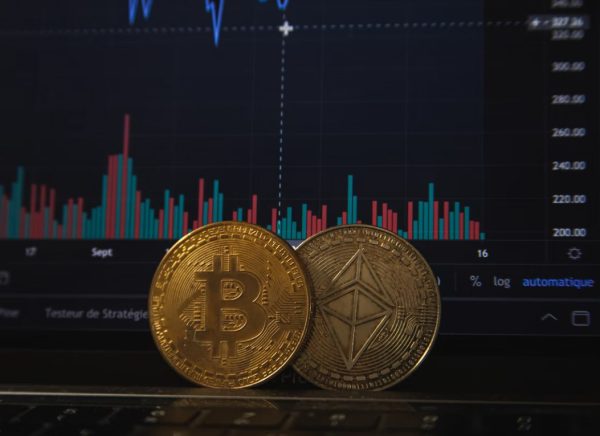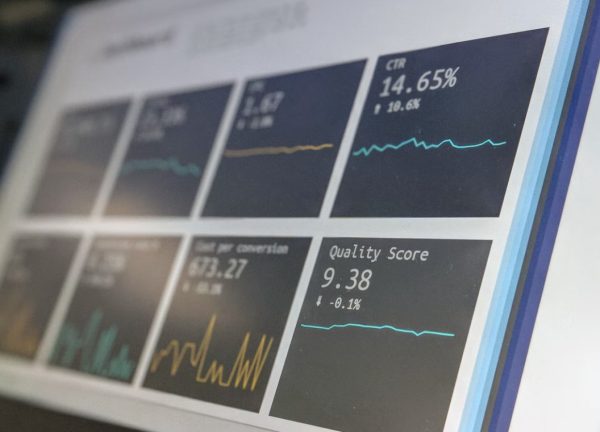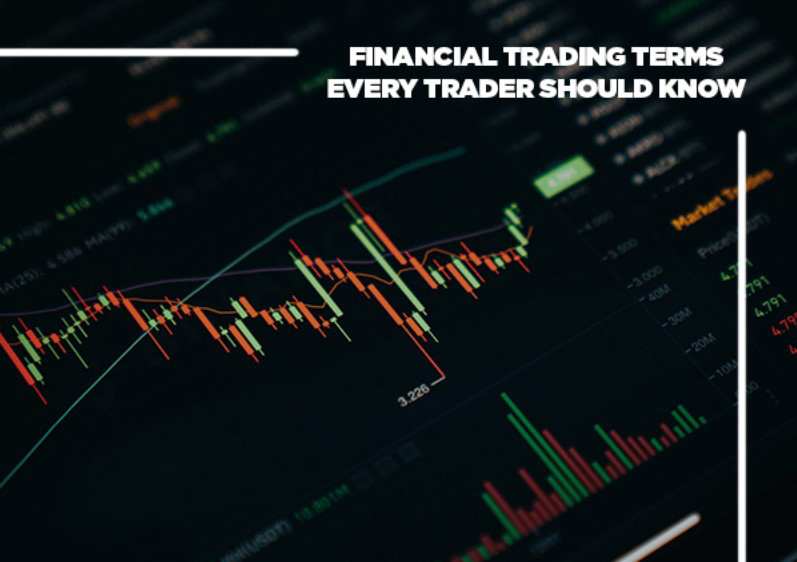Introduction
What does ‘day trading’ mean? Why do other traders get worried when they talk about the ‘volatility’ state of the markets? There are many questions and much information to digest when it comes to trading that an unprepared fresher may feel overwhelmed easily.
Understanding essential financial trading terms is indeed one of the important, as well as the most basic, parts of the learning journey of every trader. Learning these most common financial markets glossary will surely help you remove the early language obstacles and pave the way for the success you deserve.
Essential Financial Trading Terms (by Alphabetical Order)
A
Annual Report
Annual reports provide financial information to shareholders about the company they invest in. It contains insightful data such as the company’s cash flows and management strategies so that the traders can evaluate the business proficiency and financial situation of the company to make further investment decisions.
Arbitrage
Arbitrage is the practice of buying and selling the same asset on different exchanges at different prices. If a stock is worth $20 on one exchange and $20.50 on another, you could buy it for $20 and sell it for $20.50 on the other while keeping the price difference as profit.
At The Money
ATM refers to an option contract with the same strike price as the underlying market price. An ATM option usually offers a delta of 0.50, which is positive for calls and negative for puts.
Ask/ Offer
The ask price, also known as an offer price, is the lowest value of money that a seller is willing to accept for that asset.
Averaging Down
Averaging down is the process of adding to a losing position at a lower cost. It expands your position size while decreasing your average purchase price.
B
Bar Chart
A Bar Chart, also known as a ‘Bar Graph’, is a type of chart that demonstrates data using rectangular bars or columns (referred to as bins) that represent the total number of observations in the data for that category. A bar chart can be displayed with vertical columns, horizontal bars, comparative bars (many bars next to each other for easy comparison), or stacked bars (much detailed information about a bigger host).
Beta
Beta is used to measure the volatility of an asset in comparison to all markets in general – regarded to have a beta of 1. If an asset has a beta of a specific value, it means that it moves that many points for every one point move in the market, showing that the asset is more volatile than the market.
Bearish (or Bear)
In trading, something is bearish (or the bear market) is when it is pessimistically expected and experienced with negative activities. Such a situation is in opposition to the bull market.
Blue-Chip
Blue-chip assets (for instance blue-chip stocks) refer to those that come from large leading companies in the industry. The expression takes its root from the blue chips with the highest value in casinos.
Broker
A broker acts as an intermediary for the traders to connect to the exchange. Instead of trading on their own, brokers buy and sell stocks on behalf of investors for a small commission.
Bullish (or Bull)
The bull market is the opposite of the bear market. Something is bullish when it is expected with positive trends and profitability.
C
Candlestick Chart
Candlestick chart is a technique for establishing a basis for a trade by technically analyzing certain pieces of information: the open and close prices, as well as the high and low prices for the period.
Call Option
A call option is a contract that grants the buyer not the obligation but the right to purchase a specific asset at a specific price on a specific date. The value of a call option rises is also proportional to the price of the market asset.
Cash Flow
A cash flow is an amount of money coming into and going out of a company’s accounts, as reported in annual earnings reports. It can refer to a specific operation, department, or the entire company.
Closing Price
The closing price is the value of an asset recorded before the market closed on any given day. Often used as a marker, the closing price can also be taken into consideration when comparing the movement of an asset over a single day to previous ones.
Crystallization
Crystallization is the process of closing a position and immediately reopening an identical position to realize capital gains or losses. They can quickly balance out the net value of their assets by realizing a loss or profit without losing the position that they believe can still bring more profit.
D
Day Trading
Day trading involves the simultaneous purchase and sale of assets on the same day, often online, thus aiming to make profits based on minor, short-term price fluctuations
Delta
Delta, also known as a hedge ratio, is a metric used in trading to determine how the price of a contract changes when the price of the underlying asset changes.
Derivative
Derivatives refer to financial products whose value is determined by the price of an underlying asset. To speculate on the future price movements of an asset, traders will usually utilize derivatives without having to purchase the asset itself.
E
Earning Per Share
Earnings per share (or just EPS) is a critical metric when determining a company’s earnings. It is calculated by dividing the total returns made in a given period by the number of shares listed on the stock exchange.
Equity
In financial markets, equity refers to the number of shares owned by a company. When you buy assets from a company (shares, stocks, and the like) as an investor, you are purchasing an equivalent degree of ownership in that company. The financial markets are where these company assets (equity) are traded between investors.
Exchange
An exchange can be both a physical or virtual market where financial assets are traded, for instance: the numerous stock exchanges in the country or around the world where stocks are traded by investors.
Execution
Execution refers to the completion of a trade transaction for a trader carried out by a broker.
F
Fair Value
Fair value is generally used to indicate the amount of money attributed to an asset, as well as the contract price (when it comes to options or futures trading) reflecting the price of the underlying asset.
Fiat Currency
A fiat currency is basically a that is not relevant to the price of a commodity, such as gold or diamond. Its value is mostly defined by its users (both national and worldwide) in the issuer (typically the government or the central bank of that country or just the country itself).
Fibonacci Retracement
A Fibonacci retracement is a popular technical analysis tool involving using percentages, horizontal lines, and price charts to determine potential levels of support and resistance. Knowing these areas can help traders decide when to open/ close positions and further strategies.
Financial Instrument
A financial instrument is a monetary contract between two parties where it is considered an asset to one side while being regarded as a liability to the other.
Financial Markets
Financial markets consist of any location or system that allows buyers and sellers to trade financial assets such as stocks, equities, financial contracts, derivatives, foreign currencies, and cryptocurrencies.
Fundamental Analysis
Fundamental Analysis is the process by which a trader examines fundamental metrics of an asset or a company to determine the pros, cons, as well as potential growth for developing trading plans.
Futures Contract
Differing from options contracts, futures contracts give the holder both the right as well as the obligation to buy or sell a specific asset at a specified price on a future date.

G
GDP
Gross domestic product, or GDP, is the sum of the value of the commodities and services generated in a nation during a given time period. It serves as a gauge for the size and strength of a nation’s economy.
Gross Margin
Gross margin, often known as gross profit margin, is a metric for determining how much money a business has left over after deducting the direct expenses related to the sale of its products and services.
H
Hedge
A hedge is a trade or an investment created to lower your current risk exposure. As a result, hedging is the technique of lowering risk through investing.
High-frequency Trading
High-frequency trading, also known as HFT, is a type of modern trading platform that utilizes cutting-edge processing technology (https://en.wikipedia.org/wiki/Automated_trading_system) (trading bots for instance) to quickly handle a large number of deals that a normal human is not capable of. It can also be used to do large-scale market research and identify potential trading opportunities.
I
Index
An index is a benchmark that traders and investors use as a point of reference, for instance, the S&P 500 and the Dow Jones Industrial Average (the Dow).
Indicator
An indicator includes using one or a series of trading tools to assist make the market more understandable. For instance, they can confirm if the market is trending or range and provide specific market data according to the criteria of the users.
Inflation
Inflation involves the rise of the cost of goods and services in an economy. It is also viewed as the depreciation of money since this results in each unit of the currency’s economy being worth less of any good or service.
Initial Public Offering
Initial Public Offering (or just IPO) is the process of selling or offering its stocks to the general public from a new corporation.
Internal Rate of Return
Internal rate of return (IRR) is a complex capital budgeting metric that businesses use to assess the profitability of future investments and projects based on anticipated cash flows.
In The Money
When an asset is in the money (ITM), it means that the underlying asset is in a favorable position relative to the price at which it may be purchased or sold (its strike price).
L
Leverage
Leverage involves borrowing money from your broker to increase your profits. It is usually done to boost gains, but doing so also increases potential losses.
Liquidity
Market liquidity, often known as liquidity, is a term used in finance to indicate how quickly traders make moves to their assets on the market (withdraw, deposit, buy, sell, and the like) without changing their prices. High liquidity usually results from high demand.
Liabilities
Liabilities are basically the debts, commitments, and obligations that reduce a company’s overall value and must be executed by a determined date. Debt can take many different forms; typical examples include company expenses, loans, unearned income, and legal responsibilities.
Long Position
A long position refers to the act of holding a position that benefits from an asset’s rising market value.
M
Margin
A margin account is used to borrow funds from a broker to buy stocks or other assets. The margin is the discrepancy between the loan balance and the price of the security.
Moving Average
Moving average is a technique that is usually utilized within trading tools for demonstrating the typical share price of a stock over a given time frame.
N
Net Change
Net change is the difference between the closing price of the current trading session and that of the previous session. It reflects whether the markets were higher or lower than usual the day before, indicating positive or negative.
Negative Balance Protection
Negative balance protection involves the act of making sure that traders will not lose more than the balance in their account, even when high volatility strikes.
Non-current Asset
Non-current assets are long-term investments made by a corporation, the full value of which will not be realized during the accounting year. This can also refer to things like intangible assets or assets with no set expiration date, such as real estate or land, or things without an inherent value.
O
Options Contract
Unlike a futures contract, options contracts give the holder both the right, but not the obligation to buy or sell a specific asset at a specified price on a future date.
Over The Counter
Over-the-counter trades are executed electronically, thus there is less transparency than on the major exchanges. Small businesses, usually foreign corporations, that don’t meet the listing requirements for the major exchanges are the companies listed on the OTC marketplaces.
Out of The Money
When an options contract is out of the money, it has no inherent value and will expire worthless because the strike price has not yet been reached.
Open Position
An open position refers to the act of holding a trade that still has the potential to make money or lose money. All gains and losses are realized when a position is closed.
P
Portfolio
A portfolio of a trader is a grouping of assets. It can contain a single asset (for instance, stock or bond) or a large number of other securities.
Position
Position refers to a trade that is either open (still available for business) or closed (already been closed). Only when a position has been closed can profit or loss on it be recognized.
Put Option
A put option is a contract that grants the buyer the right, but not the obligation, to sell a certain asset at a particular price and on a particular date. If the market price of the asset decreases, the put option’s value rises.
Q
Quote
A quote is the most recent trading price of a stock. Free stock quotes are typically delayed information. Real-time data might come with an additional cost.
R
Rally
A rally is a sudden sharp rise in the price of an asset or the general pricing level of the market. It may be a bull rally or a bear rally, depending on the general situation.
Range
The range of a market is the difference between its highest and lowest price over a specific time period and is primarily used as a volatility indicator. A large range suggests price turbulence.
Rate of Return
The rate of return (RoR) is the loss or gain of an investment over a specific time period.
Resistance Level
A resistance level is an area on a price chart when there is a strong tendency to sell an asset, impeding an upward price trajectory. A trader may decide to close their position and take the profit rather than risk the market price dropping back if it is getting close to a resistance level.
S
Scalping
A scalp is when a trader opens and then swiftly closes a position in the hopes of making money off of slight price changes.
Sector
A sector is a collection of equities from the same industry. Some traders favor trading in a particular industry, particularly when that activity from that industry is strongly and heavily impactful.
Short Selling
Short selling is to make a transaction in which you anticipate a decline in the price of an asset.
Spread
The spread is the difference in price between the ask and the bid (or a bid-ask spread in this situation) for a security or asset, such as a stock, bond, or commodity.
Strategy
A trading strategy is one or a series of plans set up to help traders make profits.
Straddle
Straddle is a strategy that is usually utilized in options trading. A trader uses a straddle when they simultaneously buy or sell a call option and a put option for the same underlying asset at a specific moment provided that both options have the same expiration date and strike price.
Support Level
Support level is an area that is considered an ideal time to join and exit the market, allowing traders to control their risk by setting stops and limits.
Swing Trading
As opposed to day trading, swing traders hold stocks for at least one night, but sometimes several. Trades executed by using this strategy are still considered incredibly quick investments.

T
Technical Analysis
Technical analysis is a method to analyze and forecast price changes in the financial markets by using historical price charts and market data. Its results can help traders deduct insightful information to make trading decisions.
Time Value
Time value refers to the fact that the value of an asset is proportional to the remaining time until its expiration. The longer the period, the more the value.
Trading Account
In modern days, it is common that traders must open an online trading account with a licensed broker in order to carry out their transactions electronically. This trading account serves as the conduit for all share purchase and sale orders.
Trend
A trend is when a market exhibits a certain movement in either direction. One of the most important aspects of market analysis is determining when trends start and stop.
V
Volatility
Volatility is the fluctuating state of the price of an asset. When high volatility strikes, the price can unpredictably make sudden changes to both directions within a short period.
Volume
Volume is the total number of shares of stock exchanged in a given time frame, usually measured as the daily average.
W
Weekend Trading
Weekend trading refers to a service that enables you to observe several markets over the weekend.
Y
Yield
Yield, which is stated as a percentage, primarily refers to the return on investment for an asset.
Conclusion
Understanding above financial market terms may only be the beginning of your learning journey. Things will get even more complicated when tackling these words in a bigger context or a more technical-driven topic.
For beginners to make the best out of this knowledge, thus cutting short your learning curve, it is highly recommended that you take courses that cover a broad range of topics (https://libraryoftrader.net/product/13-market-moves) and financial markets glossary.



